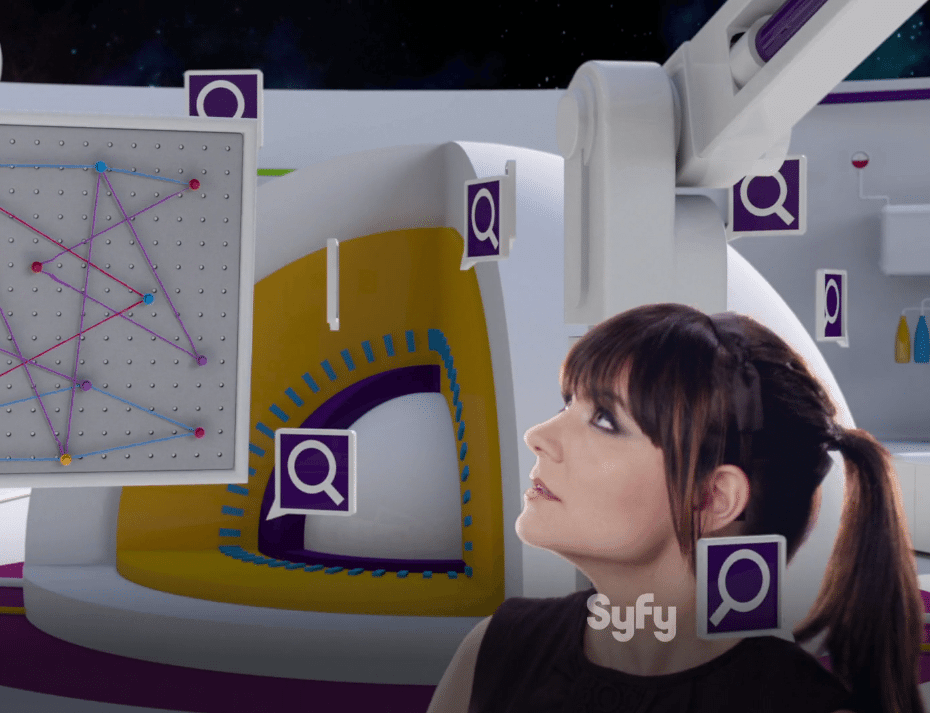Whether it’s literature, science fiction movies or other forms of art, can the visions of a possible future actually help to mold or influence actual future outcomes? According to Ariel Waldman, people do look to fiction as a means of stimulating change.
Ariel Waldman is the founder of Spacehack, an online directory that enables the user to participate in space exploration in a number of different ways. She is also the instigator of Space Hack Day, a global event that brings together engineers, scientists, and technologists so they can share their ideas and see what they can develop over a single weekend.
“I think fiction, sometimes, not only tells us a lot about what the future could be but is also sometimes critical of how the present is, for better or worse. So I think the way fiction plays a role in everything today is really great and really encouraging,” says Waldman.
A perfect example is the correlation between the most recent Star Trek episodes and contemporary science today. Transparent aluminum armor (ALON) and telepresence are just two examples. There are many other examples throughout the history of fiction from H.G Wells to Arthur C. Clarke. Waldman points out that not only can people base scientific breakthroughs back through fiction, but also their careers.
“A lot of people who work at NASA claim that a lot of the reasons they work at NASA is because they were really into Star Trek growing up. Fiction has not only been this great change agent in technology, but also for people who work in technology,” she explains.
There are many more examples of how forward-thinking authors and artists have influenced or inspired technological developments. Arthur C. Clarke, author of Space Odyssey 2001 and other science fiction novels, wrote about a significant amount of technologies that did not yet exist. Many of his predictions actually came true, such as The Space Guard Survey, the Millennium Bug and communication satellites.
Another example is author Neal Stephenson, who in his 1992 novel Snow Crash, described 3-D virtual worlds, and in his 1995 novel The Diamond Age, his depicts an electronic book that foreshadowed Amazon’s Kindle.
Waldman is helping this vision continue today at Spacehack. Imagine being able to help NASA process radio astronomy data, identify asteroids and search the universe for planets and solar systems using your home computer. Impossible as this may seem, at Sparcehack.org, you can participate in these projects without necessarily being an astronaut or astrophysicist.
“There are some really good projects on Spacehack.org that encourage us to do future think while still begin grounded in the present. One project that I think is great is the University Rover Challenge,” says Waldman.
The challenge, which began in 2007, invites university students around the world to develop and build rovers that will one day be able to work alongside human explorers on Mars. Such types of project open up the field of technological research and development to include the most innovative ideas. As Waldman points out, someone could design a rover that is inspired by tumbleweed, or animal movement.
Other similar projects which can inspire future visions include the Galaxy Zoo Challenge. This is a user-friendly online interface, open to just about all ages, where anyone can go and classify galaxies. By doing so, Waldman explains, users are collectively helping people better understand how galaxies formed over many, many years and how they came into being the way they are. Not only that, the project has enabled people to discover entirely new galaxies that no one previously knew existed.
It is clear that future visions and developments of technology are open not only to scientists, technologists and engineers, but also artists and anyone who wishes to collaborate in the many open technology projects that are continuing to grow globally. Perhaps your ideas could inspire the next developments in computing, artificial intelligence or even space technology.
Image Credits: Ariel Waldman




















